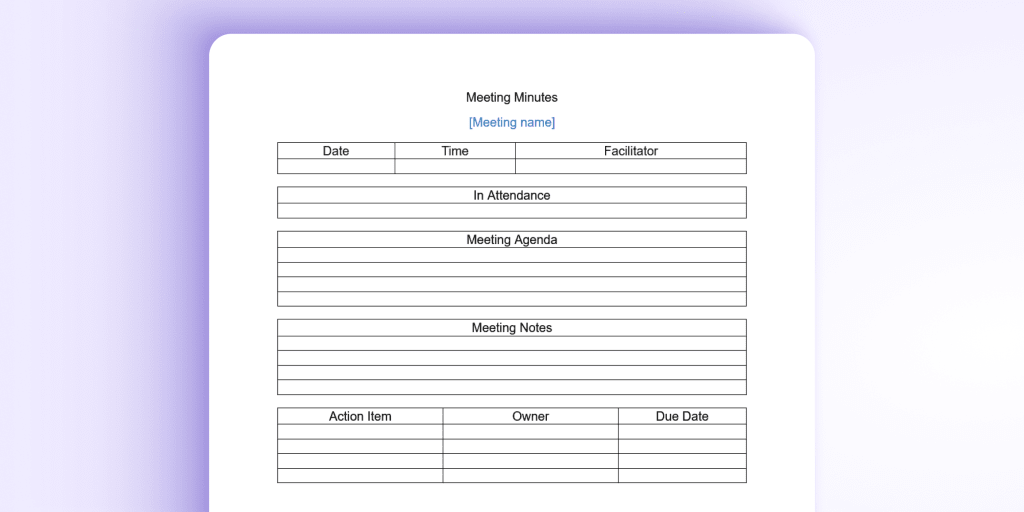Documenting what you discussed during a meeting is an integral part of proper record keeping. For both formal organizations and community-led groups, meeting minutes ensure there is written evidence of conversations and decisions that can be referred to later.
In this article, we’ll explore what meeting minutes are, what to include in them, and provide templates so that you can create your own.
We’ll also share how you can write your meeting minutes using a document editor that lets you store and share them securely and ensures no one can access them without your permission.
What are meeting minutes?
Meeting minutes, also known as minutes of meeting, are a written record of a meeting or hearing. They provide a structured summary of the key points discussed, decisions made, and action items assigned.
Keeping minutes of a meeting ensures that there is a single formal record of a discussion that all concerned parties can refer to. They can serve as a reference for future meetings, helping to revisit and recall what you previously discussed.
These documents are commonly used by organizations that need to maintain accountability for their actions, such as legal entities, medical boards, and similar bodies. Boards of directors, for example, use meeting minutes to document resolutions, votes, and decisions made during a board meeting.
While meeting minutes are usually created to serve as an aid within an organization, a court may order an organization to hand over meeting minutes as evidence in a lawsuit. In some cases, the absence of meeting minutes can act as proof that a meeting did not occur at all.
They’re not strictly for political or professional organizations. Any group that has multiple stakeholders and needs to coordinate over time should consider keeping minutes of their meetings, including neighborhood watch groups, homeowner associations, amateur sports leagues, hobby groups, or spiritual committees.
What to include in meeting minutes?
There is no single minutes of meeting format. However, most follow a similar structure. An effective meeting minute document clearly itemizes essential context and information so even someone who did not attend the discussion can understand what occurred. Here are some sections to include:
- Basic information: Start with the date, time, and location of the meeting. Also include the names of attendees and, if noteworthy, absentees.
- Agenda items: List all the topics discussed during the meeting in the order that they were addressed. This creates a clear structure for your minutes.
- Key notes: Note essential points that are important for context, such as background information, differing viewpoints, or arguments that influenced decisions.
- Decisions made: Document any decisions made for each agenda item. You should specify who made the decision and what the next steps are.
- Action items: Record any tasks that were assigned during the meeting. Document who is responsible for each task and the deadline for completion.
- Next meeting: If decided, note the date and time for the next meeting and any outstanding items that may still need to be addressed.
Meeting minutes example

If you have never created this kind of document before, it can be difficult to understand how to write minutes of the meeting.
We’ve created a template to help get you started.
Keep your meeting minutes private and secure
Keeping meeting minutes confidential is often crucial for protecting sensitive information discussed during meetings, such as strategic decisions, financial data, or personal matters.
To ensure security and privacy for your minutes, consider using an end-to-end encrypted document editor like Docs in Proton Drive. With Docs, you can securely record, share, and access meeting minutes without risking unauthorized access or data breaches.
Docs also allows you to collaborate with others in real time. See who is viewing your document, leave comments, and track cursor movements, all while ensuring no one — not even Proton — can see your minutes without your permission.
Try Docs today and access Proton Drive’s other privacy-first features, including cloud storage with no file size limits, secure file sharing, and access to all your content across devices.







